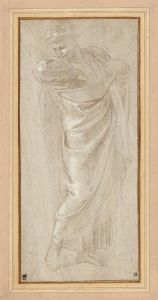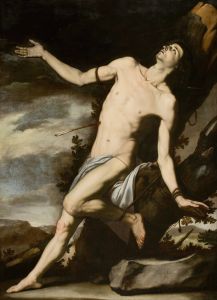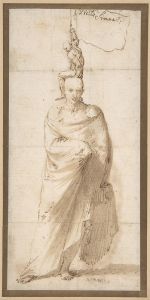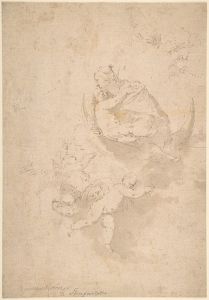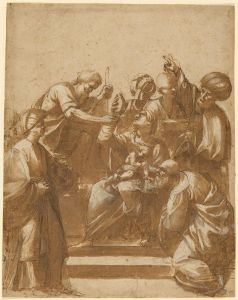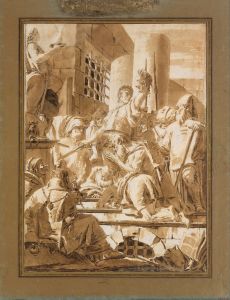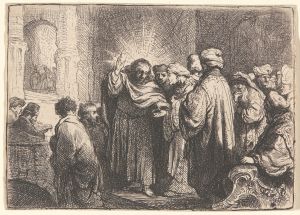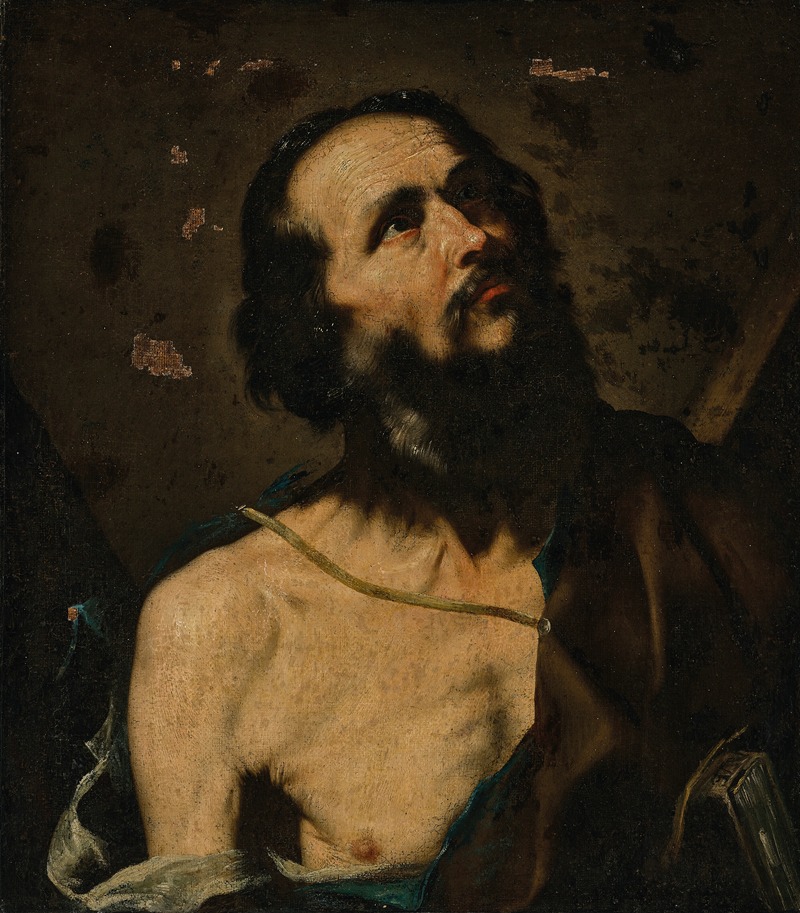
Saint Andrew – a fragment
A hand-painted replica of Jusepe de Ribera’s masterpiece Saint Andrew – a fragment, meticulously crafted by professional artists to capture the true essence of the original. Each piece is created with museum-quality canvas and rare mineral pigments, carefully painted by experienced artists with delicate brushstrokes and rich, layered colors to perfectly recreate the texture of the original artwork. Unlike machine-printed reproductions, this hand-painted version brings the painting to life, infused with the artist’s emotions and skill in every stroke. Whether for personal collection or home decoration, it instantly elevates the artistic atmosphere of any space.
Jusepe de Ribera, a prominent Spanish painter of the Baroque period, is renowned for his dramatic and realistic depictions of religious subjects. One of his notable works is "Saint Andrew – a fragment," which exemplifies his mastery in capturing human emotion and the spiritual intensity of his subjects. Ribera, who spent much of his career in Naples, was heavily influenced by the tenebrism of Caravaggio, a style characterized by stark contrasts between light and dark.
"Saint Andrew – a fragment" is a part of Ribera's larger body of work that often focused on the apostles and saints, figures central to Christian iconography. Saint Andrew, one of the twelve apostles of Jesus, is traditionally depicted in art as an elderly man with a long beard, often holding a cross in the shape of an X, known as a saltire, which is associated with his martyrdom. Ribera's portrayal of Saint Andrew is consistent with this iconography, emphasizing the saint's piety and strength of character.
The painting is a fragment, meaning it is a portion of a larger work that has either been lost or was intentionally created as a standalone piece. This fragmentary nature adds a layer of intrigue and mystery, as viewers are left to imagine the original context and composition of the complete work. Despite being a fragment, Ribera's skill in rendering textures and expressions is evident. The use of chiaroscuro, a technique that employs strong contrasts between light and dark, highlights the saint's facial features and imbues the painting with a sense of depth and realism.
Ribera's work is noted for its unflinching realism and attention to detail, qualities that are apparent in "Saint Andrew – a fragment." The artist's ability to convey the physical and emotional state of his subjects is a hallmark of his style. In this fragment, the viewer can observe the meticulous depiction of the saint's aged skin, the intensity of his gaze, and the contemplative expression that suggests a deep spiritual inner life.
The historical context of Ribera's work is significant. Living in 17th-century Naples, Ribera was part of a vibrant artistic community influenced by both Spanish and Italian traditions. His paintings often reflect the Counter-Reformation's emphasis on religious themes and the humanization of sacred figures, making them more relatable to the viewer. Ribera's focus on the apostles and saints aligns with this broader artistic and religious movement, which sought to inspire faith and devotion through art.
"Saint Andrew – a fragment" is housed in a collection that appreciates Ribera's contribution to Baroque art. His works are celebrated for their emotional depth and technical proficiency, and this fragment is no exception. It serves as a testament to Ribera's ability to capture the essence of his subjects, even in incomplete form. The painting invites viewers to reflect on the life and legacy of Saint Andrew, as well as the enduring power of religious art to convey complex human emotions and spiritual truths.
In summary, Jusepe de Ribera's "Saint Andrew – a fragment" is a compelling example of Baroque religious art, showcasing the artist's skill in realism and emotional expression. Despite its fragmentary state, the painting remains a powerful depiction of faith and devotion, characteristic of Ribera's oeuvre.





